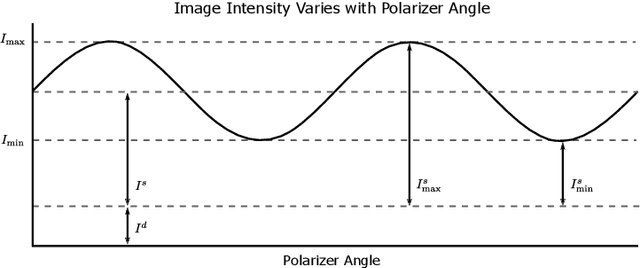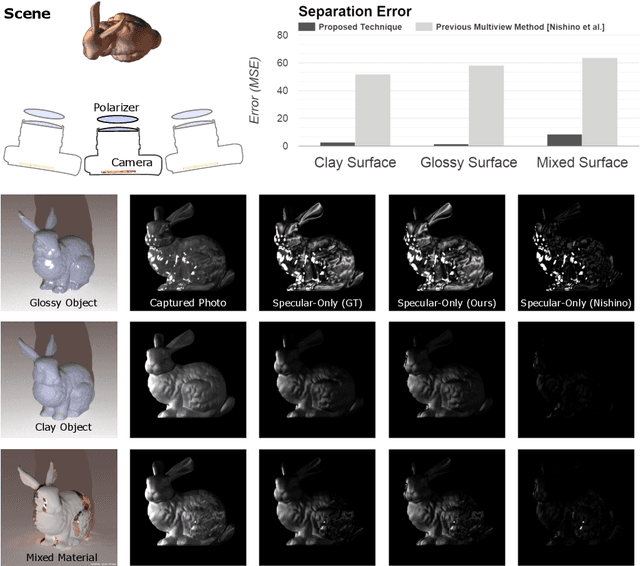Shape from Mixed Polarization
Paper and Code
Jun 11, 2016



Shape from Polarization (SfP) estimates surface normals using photos captured at different polarizer rotations. Fundamentally, the SfP model assumes that light is reflected either diffusely or specularly. However, this model is not valid for many real-world surfaces exhibiting a mixture of diffuse and specular properties. To address this challenge, previous methods have used a sequential solution: first, use an existing algorithm to separate the scene into diffuse and specular components, then apply the appropriate SfP model. In this paper, we propose a new method that jointly uses viewpoint and polarization data to holistically separate diffuse and specular components, recover refractive index, and ultimately recover 3D shape. By involving the physics of polarization in the separation process, we demonstrate competitive results with a benchmark method, while recovering additional information (e.g. refractive index).
 Add to Chrome
Add to Chrome Add to Firefox
Add to Firefox Add to Edge
Add to Edge